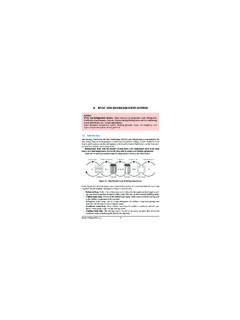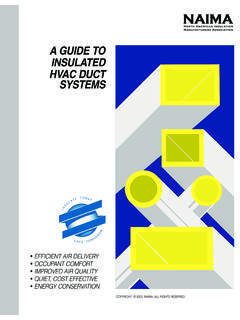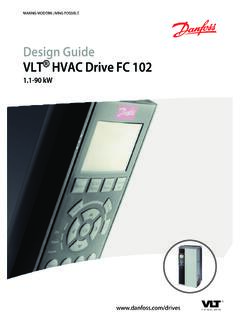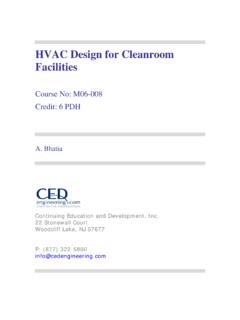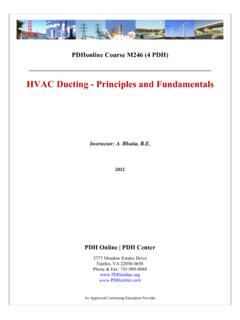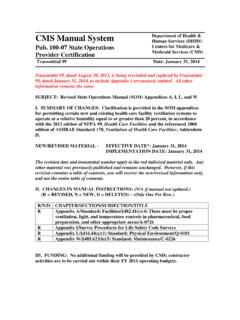Transcription of GUIDELINES ON HEATING, VENTILATION AND AIR …
1 Working document July 2017 Revised document for comment 1 GUIDELINES ON 2 heating , VENTILATION AND AIR-CONDITIONING 3 SYSTEMS FOR NON-STERILE PHARMACEUTICAL 4 PRODUCTS 5 6 (June 2017) 7 REVISED DRAFT FOR COMMENT 8 9 10 11 12 13 14 15 _____ 16 World Health Organization 2017 17 All rights reserved. 18 This draft is intended for a restricted audience only, the individuals and organizations having received this draft. The 19 draft may not be reviewed, abstracted, quoted, reproduced, transmitted, distributed, translated or adapted, in part or in whole, 20 in any form or by any means outside these individuals and organizations (including the organizations' concerned staff and 21 member organizations) without the permission of the World Health Organization.
2 The draft should not be displayed on any 22 website. 23 Please send any request for permission to: 24 Dr Sabine Kopp, Group Lead, Medicines Quality Assurance, Technologies Standards and Norms, Department of Essential 25 Medicines and Health Products, World Health Organization, CH-1211 Geneva 27, Switzerland. Fax: (41-22) 791 4730; 26 email: 27 28 The designations employed and the presentation of the material in this draft do not imply the expression of any opinion 29 whatsoever on the part of the World Health Organization concerning the legal status of any country, territory, city or area or 30 of its authorities, or concerning the delimitation of its frontiers or boundaries.
3 Dotted lines on maps represent approximate 31 border lines for which there may not yet be full agreement. 32 The mention of specific companies or of certain manufacturers products does not imply that they are endorsed or 33 recommended by the World Health Organization in preference to others of a similar nature that are not mentioned. Errors 34 and omissions excepted, the names of proprietary products are distinguished by initial capital letters. 35 All reasonable precautions have been taken by the World Health Organization to verify the information contained in this 36 draft.
4 However, the printed material is being distributed without warranty of any kind, either expressed or implied. The 37 responsibility for the interpretation and use of the material lies with the reader. In no event shall the World Health 38 Organization be liable for damages arising from its use. 39 This draft does not necessarily represent the decisions or the stated policy of the World Health Organization. 40 41 42 Should you have any comments on the attached text, please send these to Dr S. Kopp, Group Lead, Medicines Quality Assurance, Technologies, Standards and Norms with a copy to by 15 September 2017.
5 Medicines Quality Assurance working documents will be sent out electronically only and will also be placed on the Medicines website for comment under Current projects . If you do not already receive our draft working documents please let us have your email address (to and we will add it to our electronic mailing list. Working document page 2 SCHEDULE FOR THE PROPOSED ADOPTION PROCESS OF DOCUMENT 43 GUIDELINES ON heating , VENTILATION AND AIR-CONDITIONING 44 SYSTEMS FOR NON-STERILE PHARMACEUTICAL PRODUCTS 45 Discussion of proposed need for revision in view of the current trends in engineering and experience gained during the implementation of this guidance in inspection during informal consultation on data management, bioequivalence, GMP and medicines inspection 29 June 1 July 2015 Preparation of draft proposal for revision by Mr D.)
6 Smith, consultant to the Medicines Quality Assurance group and Prequalification Team (PQT)-Inspections, based on the feedback received during the meeting and from PQT-Inspections July August 2015 Circulation of revised working document for public consultation September 2015 Preliminary consolidation of comments received and review of feedback 10 October 2015 Presentation to the fiftieth meeting of the WHO Expert Committee on Specifications for Pharmaceutical Preparations 12 16 October 2015 Final consolidation of comments received and review of feedback January March 2016 Discussion at the informal consultation on good practices for
7 Health products manufacture and inspection, Geneva 4 6 April 2016 Preparation of revision by Mr D. Smith, based on comments provided by Mr A. Kupferman and Dr Van Zyl, both participants at the above-mentioned consultation. May 2016 Circulation of revised working document for public consultation May 2016 Consolidation of comments received and review of feedback August September 2016 Presentation to the fifty-first meeting of the WHO Expert Committee on Specifications for Pharmaceutical Preparations 17 21 October 2016 Preparation of draft proposal for revision by Mr I.
8 Thrussell, consultant to the Medicines Quality Assurance group and Prequalification Team (PQT)-Inspections, based on the feedback received during the meeting and from PQT-Inspections for further discussion at the informal consultation on good practices for health products manufacture and inspection, Geneva, April 2017. January March 2017 Discussion at the informal consultation on good practices for health products manufacture and inspection, Geneva, April 2017 April 2017 Preparation of the next version of the GUIDELINES based on the feed-back received prior to and during the informal consultation, by Dr van Zyl.
9 May 2017 May 2017 Circulation of revised working document for public consultation July 2017 Working document page 3 46 47 48 49 Consolidation of comments received and review of feedback September 2017 Presentation to the fifty-second meeting of the WHO Expert Committee on Specifications for Pharmaceutical Preparations October 2017 Working document page 4 BACKGROUND 50 The World Health Organization (WHO) published the first edition of the WHO GUIDELINES on 51 good manufacturing practices for heating , VENTILATION and air-conditioning systems for non-52 sterile pharmaceutical dosage forms in WHO Technical Report Series, No.
10 937, 2006. After 53 a revision, the second edition of the document was published in WHO Technical Report 54 Series, No. 961, 2011. Having considered various comments and questions related to good 55 manufacturing practices (GMP) for heating , VENTILATION and air-conditioning ( hvac ) 56 systems, the document was opened for revision. After wide public consultation over the 57 recent years (see history of the process and timelines above), and considering comments 58 received from (but not limited to) various organizations, industry and individuals, the 59 document and comments were considered during an informal consultation in Geneva in 60 April 2017.











